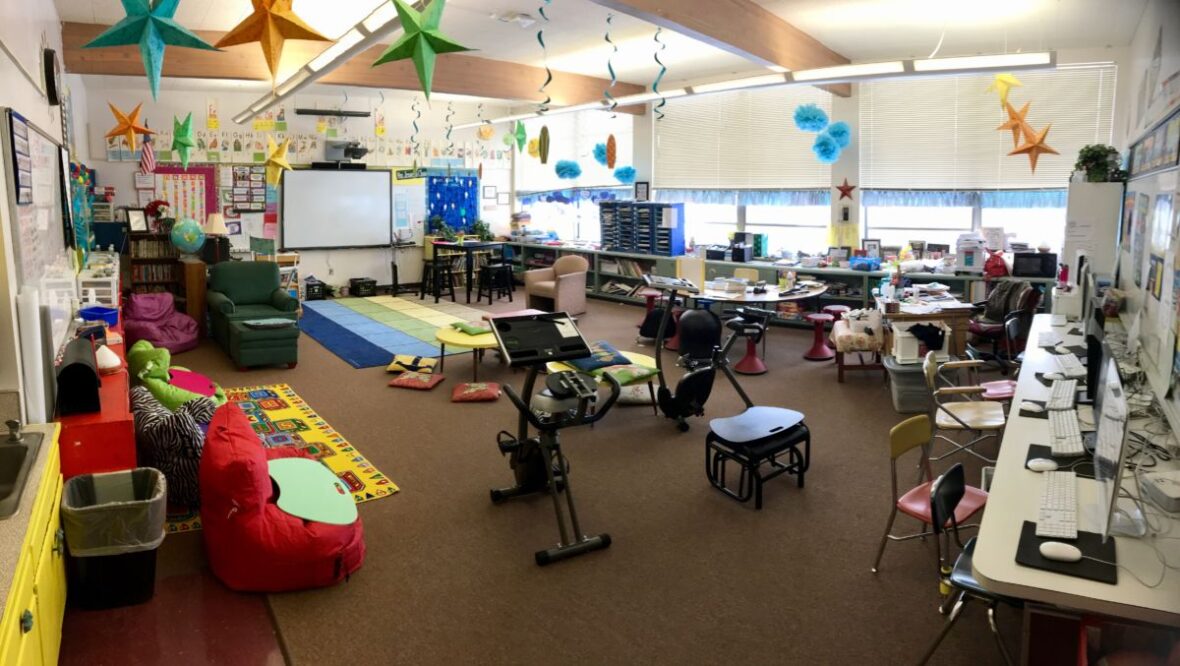BLACKFOOT — Third-grade teacher Shellie Jensen occupies the only desk in her entire classroom.
The rest of the space is strewn with colorful bean bags, pillows, rugs, chairs, ottomans, benches, stools, a kitchen table and a pair of stationary bikes.
“You won’t find a single child’s desk in here — and at this point, I don’t think my students will ever use them again,” Jensen said.

Her decision to ditch traditional desks for a more diverse seating repertoire stems from a recent bout with overcrowding and efforts to help hyperactive kids contain their “wiggles.” Instead of assigning each student a desk, Jensen lets her kids choose where they want to sit each day, complete assignments on dry-erase clipboards and “shift” to a new spot every few hours.
It’s a little too early to tell how much the change is impacting learning, she says, but fellow teachers throughout I.T. Stoddard Elementary School in Blackfoot are following suit.
“It’s been good so far,” said fourth-grade teacher Michelle Miles. “The more active ones sometimes see it as a ticket to get up and wander the room, so you have to make sure they know who’s in charge.”
Jensen first floated the idea last year, after the local fire marshal asked her to free up space in her room by removing a few desks — a tough request, since the number of students, not space, ultimately determines how many desks a teacher needs.
So she went home, Googled “flexible seating” and found that educators across the country have been creating alternative seating arrangements for years. Jensen liked the idea and decided to start small, snatching up a couple chairs and ottomans at local thrift stores and purchasing a few stools online.
The benefits were almost immediate, she said: “I saw right off that students actually had fewer distractions. For one thing, they weren’t digging in there desks.”
By the end of the 2015-16 school year, Jensen was all in, matching seats with students’ diverse learning styles. One of her more hyperactive students spends most of his time on a rocking ottoman. Others, who lag behind in reading, play catch up on stationary bikes near the back of the room.
Word of Jensen’s alternative approach spread throughout the building. This school year, at least three other teachers have signed on.

Students reluctant to make the change get to keep their assigned desks, which is what third-grader Royal Dalley opted for.
“I can just sit in my own desk without anyone trying to take it,” Dalley said. “Plus, I want to get used to sitting in a desk because I’ll be doing it the rest of the years I’m in school.”
Third-grader Klaira Barrow has embraced the change. She says softer seats have helped her back “not hurt” anymore.
Jensen says she’ll be interested to see how the change plays out when students take standardized tests in the Spring.
“Of course, no two groups of students are the same,” she said. “But it will be interesting to see how things pan out.”
